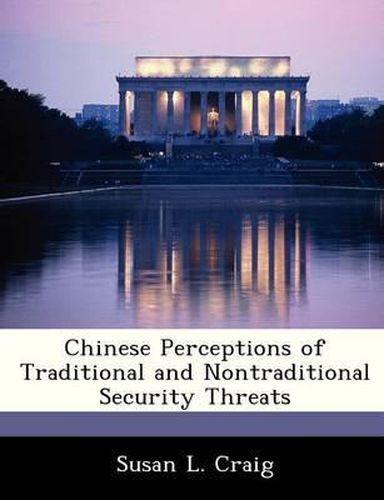Readings Newsletter
Become a Readings Member to make your shopping experience even easier.
Sign in or sign up for free!
You’re not far away from qualifying for FREE standard shipping within Australia
You’ve qualified for FREE standard shipping within Australia
The cart is loading…






To understand the motivations and decisions of China’s leadership and to behave in a manner so that we can influence them, we must try to understand the world as China does. This research is an attempt to do so by examining the writings and opinions of China’s scholars, journalists and leaders–its “influential elite.” China has a comprehensive concept of national security that includes not only defending its sovereignty and territorial integrity, but continuing its economic and social development and maintaining its international stature. The two main types of threats to China’s national security are traditional and nontraditional. The United States, Japan, and India are traditional threats, considered willing and able to endanger all three components of China’s national security. While military containment is a concern, the possibility for economic and diplomatic containment from any or all of these countries is more worrisome. Even more troublesome are nontraditional threats. Military deterrence and diplomatic skill have successfully managed traditional threats to date, but these are insufficient for overcoming nontraditional threats. An examination of China’s social and economic disparities, environmental degradation, and energy insecurity demonstrates that to overcome nontraditional threats, China’s leadership must not only look outward in efforts to foster cooperation, they must also look inward and make serious internal reforms.
$9.00 standard shipping within Australia
FREE standard shipping within Australia for orders over $100.00
Express & International shipping calculated at checkout
To understand the motivations and decisions of China’s leadership and to behave in a manner so that we can influence them, we must try to understand the world as China does. This research is an attempt to do so by examining the writings and opinions of China’s scholars, journalists and leaders–its “influential elite.” China has a comprehensive concept of national security that includes not only defending its sovereignty and territorial integrity, but continuing its economic and social development and maintaining its international stature. The two main types of threats to China’s national security are traditional and nontraditional. The United States, Japan, and India are traditional threats, considered willing and able to endanger all three components of China’s national security. While military containment is a concern, the possibility for economic and diplomatic containment from any or all of these countries is more worrisome. Even more troublesome are nontraditional threats. Military deterrence and diplomatic skill have successfully managed traditional threats to date, but these are insufficient for overcoming nontraditional threats. An examination of China’s social and economic disparities, environmental degradation, and energy insecurity demonstrates that to overcome nontraditional threats, China’s leadership must not only look outward in efforts to foster cooperation, they must also look inward and make serious internal reforms.